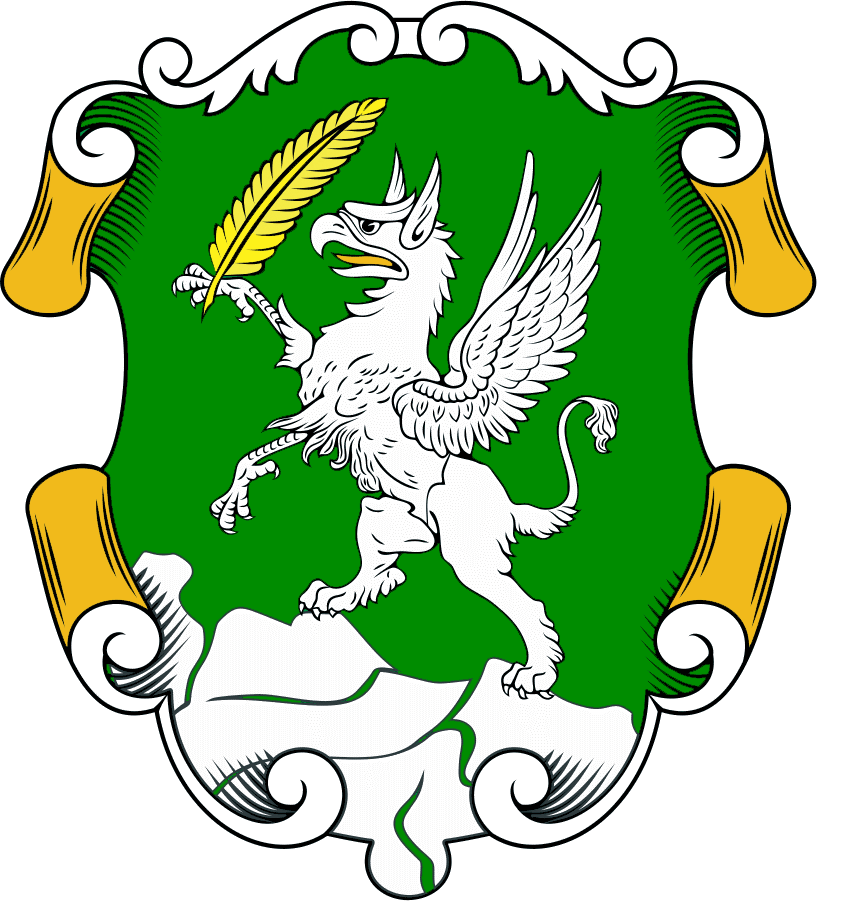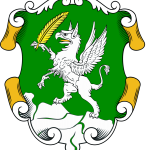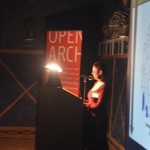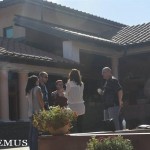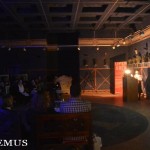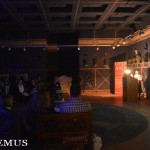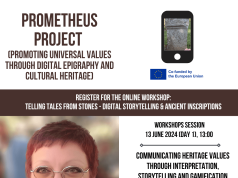
Members of HAEMUS took part at the international conference ‘The dialogue with visitors’ held in October 2014, at the archaeological site and open-air museum Viminacium, Serbia.
Group photo of the participants in Viminacium Symposium 2014
This was the 8th conference of OpenArch and the theme was “The Impact of the Dialogue with Visitors on Management in Archaeological Open-Air Museums”. Staging this meeting in Serbia offered the chance for many colleagues from Serbia itself and surrounding countries like Macedonia, Romania, Slovenia and further away to share their unique experiences with OpenArch partners from Sweden, the UK, Germany, Italy and the such. Participants learned about reconstructed sites in Romania, cultural heritage management in Macedonia, pop-up museums in Serbia. Equally interesting was to hear about the Danube Roman Limes or the celebrations of the 1700 year jubilee of the Milan Treaty – and how do you discuss with the public? Viminacium prove to be a perfect meeting point for this dialogue.
Source: exarc.net
Heritage Recourse Management and Tourism Promotion of Northeast Macedonia
Vasilka Dimitrovska*, Ivica Milevski**
*HAEMUS – Center for scientific research and promotion of culture, Skopje, Republic of Macedonia, e-mail: dimitrovska@haemus.org.mk
** University “St. Cyril and Methodus”, Faculty of Natural Sciences and Mathematics, Institute of Geography, Skopje, Republic of Macedonia, e-mail: ivica@iunona.pmf.ukim.edu.mk
Abstract:
The cultural, historical and natural heritage represent the basis for the tourist offer of a place, region, country or a wider area. In this respect, the Northeast region of the Republic of Macedonia is rich in contents, which have till recently been insufficiently presented to the public and thus poorly visited by tourists. Taking all specific spatial aspects into account, one of the most suitable ways for initial tourist activation of this region is the management of its natural, cultural, historical and archaeological resources.
Heritage Resource Management and Tourism Promotion of Northeast Macedonia – OpenArch Conference, Viminacium 2014 from EXARC
In the period 2009 to 2014, the Northeast region of Macedonia has seen the implementation of several projects, including the creation of strategies for the development of tourism in general; evaluation study of natural and cultural potentials for development of alternative tourism; and study for mapping the travel routes and setting up information charts. These projects were mostly focused on identification and evaluation of natural and cultural resources, at the same time representing community values. Due to the diversity of resources, the influence of its results was estimated to affect long-term planning in many spheres regarding the local development.
An attempt was made to create a significant number of tourist products, for the benefit of the tourists, as well as the local community, by generating economic development. As a conclusion, we would like to point out that the most important determinant in promoting natural and cultural resources is a thematic unit based on the identification of similar or the same locations that build a product. Thus, the main goal of any tourist product based on heritage is to make itself recognizable in local, regional, but also international frames.
* * * * *
Managing paleontological heritage in Republic of Macedonia
Biljana Garevska
Macedonian Museum of Natural History, Skopje, Republic of Macedonia, e-mail: b.garevska@musmacscinat.mk
Abstract:
The project for protection of fossil sites as natural reservoirs and its implementation started in 2013. The main object of the project was geo-mapping and recording of fossil sites and their aerials concentrated in Central and Eastern part of Macedonia, along the Vardar River valley.
Importance of these localities lies in Pliocene sedimentary layers rich in non-renewable fossil materials which require specific actions in excavation, collecting of fossil materials stored and classified latter in the museum depot.
Within this documentation, field monitoring of already known paleontological sites was important part of the project. Monitoring was necessary for providing information about possible tomb riders and illegal excavations. The basics for managing paleontological heritage emphasize communication, trust and corporation in the local communities and local museums. Next step was to put stress on GPS mapping of the sites, explaining geological stratigraphic data and photo-documentation. Collected data of GPS and GIS system will be used in further application which will be created to protect several localities as natural heritage, according to state laws.
Managing paleontological heritage in Republic of Macedonia – OpenArch Conference, Viminacium 2014 from EXARC
In June 2014, four local communities called for preservation and conservation of fossil sites. In order to achieve this goal, the project was upgraded with interactive educational workshops on the subject of paleontological heritage. Local people were educated and trained to react in the case to prevent illegal collecting of fossil materials and destroying natural heritage. The aim of this project gained its purpose with the field information they provided.
In the last 30 years, paleontological material in the Republic of Macedonia is facing with lack good management. To achieve this goal, requires several principles: expertise of paleontologist, education of local communities and evidence supported by the state, in order to preserve, protect and promote natural heritage.
Photo galery from the conference
